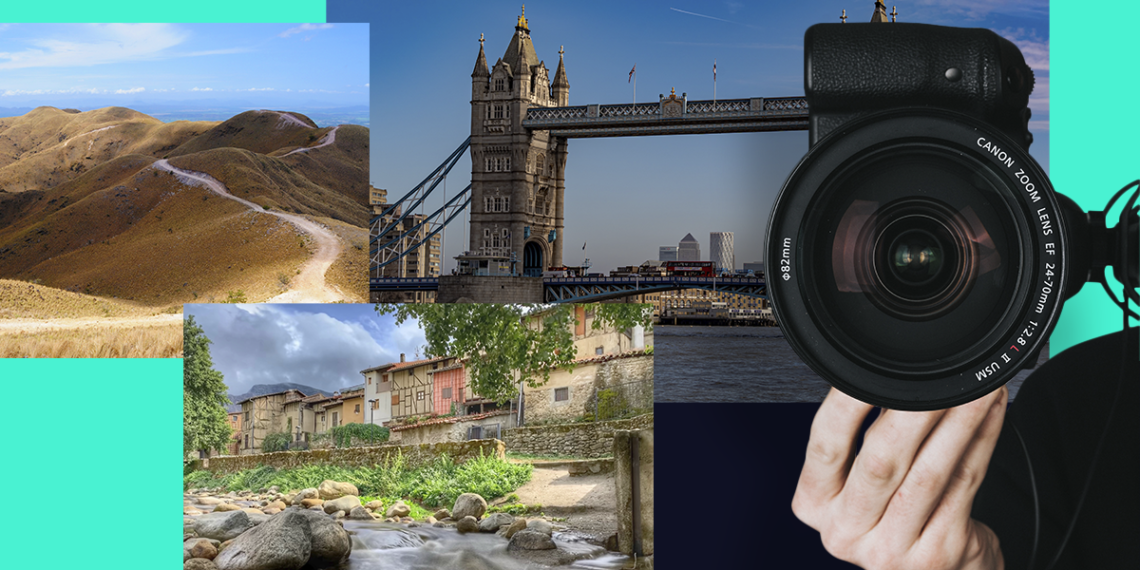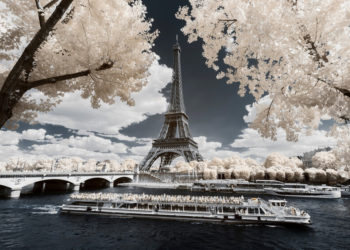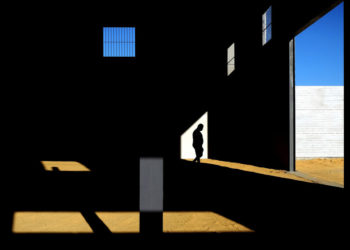home
>
Blog
>
Photography
>
Hyperfocal distance: master the technique and create sharper photos
Hyperfocal distance: d …
Do you want to know one of the photography techniques that will change the way you compose? 📸 So, you have to learn how to apply hyperfocal distance to get sharp, detailed photos.
If you want to understand what is hyperfocal distance, how does it work and how is it calculatedIn this note we will take you through the key aspects that go from theory to practice, and with which you can definitely apply the concept.
No tangled terms! With these photography tips, you will have what it takes to start taking photos with hyperfocal distance. 👌
Review the basics of photography in this ebook

Index
- Understand what hyperfocal distance is
- What is hyperfocal distance for?
- Basic concepts to understand how hyperfocal distance works
- How is the hyperfocal distance calculated?
- Tips to take advantage of hyperfocal distance in your photos
The hyperfocal distance is the distance in which we will obtain the greatest depth of field. In other words, is the distance you need to be in order to make much of your photography look sharp.
In a photograph taken with hyperfocal distance, everything within half this distance and infinity will be reasonably in focus. This is known as sharp zone And, as we said, it is nothing more than having a large depth of field in a photo. (💡 Remember this idea, because we will return to it later).
For you to understand the concept 100%, look at the following graphic.

Source: Capture the Atlas.
As you can see, our photographer is located at a hyperfocal distance from the rocks, so his sharp zone It goes from the middle of the distance between him and the rocks — which is marked by the flowers — and extends to the horizon.
Everything in that area will be clearly visible in the final photo: from the rocks to the mountains to the sky. 🏞️
The hyperfocal distance is what allows us to clearly capture as many elements as possible in an image. For this reason, learning to use the hyperfocal distance is necessary for any photographer.
In addition, there are two types of photography that take much advantage of the hyperfocal distance: landscape photography and the street photography. So if you are interested in these specializations, you better go putting this photography technique into practice.
Finding the hyperfocal distance in which you must locate to expand the depth of field depends on 3 factors:
- The size of your camera’s image sensor
- Focal length
- The aperture of the diaphragm
If you change any of these 3 variables, your hyperfocal distance will change.
Do you think if we make a quick review some basic photography concepts to understand it a little better?
Discover the fundamentals of digital photography with this course
Depth of field
💡 Do you remember we told you that the idea of taking photos with hyperfocal distance is to get a large depth of field in the photo?
Well, to continue we must clarify that concept.
By definition, depth of field is the area that will appear acceptably in focus or sharp in your photo. By locating ourselves in a hyperfocal distance, what we are looking for is to expand the depth of field.
How about we see it with an example?
Look at the next photo. This has a large depth of field, just like the one we look for when photographing with hyperfocal distance, since both the trees in the foreground and those in the background are acceptably focused.

Source: Freepik.
In contrast, in the next photo we have a shallow depth of field, as our focus point – the bulbs – is the only thing that is really sharp.

Source: Freepik.
👉 Then, what we want when focusing in hyperfocal distance is to get a large depth of field, like the first example.
However, this depth not only varies according to the hyperfocal distance, but also these factors intervene that depend directly on the configuration of your camera:
- The focal length of the lens: the longer the focal length, the shallower depth of field.
- The aperture of the camera diaphragm: the larger the aperture, the shallower depth of field.
- The distance to the focused element: the shorter the distance, the shallower depth of field.
Let’s see it in detail.
Focal length
According to Antonio Bullard, professor in the course Photography from Scratch: Travel and Capture the World:
“The focal length of a lens is the distance that exists, expressed in millimeters, between the camera’s sensor and the optical center of the lens.”
According to the Nikon blog, each lens has a focal length and this number tells us the angle of view, that is, it allows us to understand how much of the scene will be captured.
With this in mind, we are going to see 2 scenarios to achieve a large depth of field:
1. The shorter the focal length, the greater the depth of field.

Source: Euronics.
2. The longer the focal length, the narrower the angle of view and the less detail we will capture.
Source: Nikon Mexico.
👉 For the above, if you want to expand your depth of field you will want to work with lenses with a short focal length such as a 35mm or 50mm.
The aperture of the diaphragm
The diaphragm is like the “pupil” of your camera lens, that is, it is the element that controls the entry of light to the image sensor.
Now, aperture means how expanded or contracted the diaphragm is. The wider the diaphragm aperture, the more light will reach the sensor.
Opening is measured in numbers F. For example:
- If we are in bright environments, you will want to reduce the aperture of the diaphragm to settings like F 16th F 22 to prevent too much light from entering.
- But if we are in low light environments, you will want to increase the aperture of the diaphragm in settings like F 1.4 or F 2.8 to let more light through.

Source: Photographer’s Blog.
👉 So things, For each camera and for each combination of focal length and aperture, there is a unique hyperfocal distance. In short, the hyperfocal distance is smaller the smaller the focal length and the aperture.
Understanding the theoretical aspects, we are going to hang the camera and start shooting.
We have 3 ways to calculate the hyperfocal distance:
- Replace values in hyperfocal distance formula
- Use the hyperfocal table
- Download a hyperfocal distance app and let technology do the math
Option 1: Plug values into the hyperfocal distance formula
To find the hyperfocal distance in which you should be located, we have to replace the values in this formula:
H = (F * F) / (f * d)
- H is the hyperfocal distance
- F is the focal length of your lens
- f the aperture of the diaphragm
- d the diameter of the circle of confusion.
* The circle of confusion is a constant that depends on the size of your camera’s image sensor. Surely on the Internet you will find the data for the sensor you have.
Option 2: Use the hyperfocal table
To be honest, using the hyperfocal tables is more practical than the previous method. You only need to know the model of your camera, the focal length in which you have configured the lens and the aperture of the diaphragm. You look for those values in the table and voila.
Let’s look at an example to find the hyperfocal distance.
Let’s say you have a Nikon D850, a focal length of 20mm, and an aperture of F 9. For those values, your hyperfocal distance will be 1.5 meters (check it in the following hyperfocal table):

Source: Photopills.
The idea is that you place your subject at 1.5 meters, set the focal length and aperture at those values and shoot in manual mode. Anything more than 0.75 meters as far as your eye can see will be within the “sharp zone” and in focus.
Option 3 (the easiest): download an app
If you don’t want to get bogged down in formulas or numbers, there are some applications to calculate hyperfocal distance that you can download to your phone and that do all the calculations for you. This is the option for the most practical!

After all this stuff, we are going to give you the last tips to get her out of the stadium with the hyperfocal distance.
- Once you have identified the hyperfocal distance according to a specific focal length and aperture setting, do not make any adjustments! Moving these values by one millimeter implies that the hyperfocal distance is no longer what you had found.
- Use hyperfocal distance to capture images with contributing elements. For example, if you are in an abyss and you do not have objects in the foreground, it does not make sense to calculate the hyperfocal distance, since the closest object is on the horizon.
- In relation to the above, it does not make sense to use the hyperfocal distance if you have objects too close to the lens, since they would not be in the sharp area.
- It is worth calculating the hyperfocal distance when you want to highlight objects that are both near and far. Both will look acceptably sharp and you will have a detailed photo.
The most important thing is that once you understand the rule, you know how to use it or even break it for the benefit of what you want to convey. And since you are clear what is hyperfocal distance and in what situations to use itWe hope we have ignited the spark of creativity so that you are encouraged to try this photography technique in your next shots. Have fun! 📸







![Homemade light box: what is it and how to make it step by step [2021] | Crehana 🏪](https://big-photography.com/wp-content/uploads/2021/01/caja-luz-casera-75x75.jpg)
Discussion about this post